Oral Tale of St Cynog
Oral tale recorded in about 1702 in a manuscript of Hugh Thomas from Breconshire.
The story is found in British Library Harley 4181, 129–31, a manuscript of Hugh Thomas (1673–1720), where it is said to have been collected by Thomas from 'the poor Ignorant Country People' around 1702.
In the tale, Cynog retired from his father's court to an eremetical retreat a mile from 'Carevong' (apparently Y Gaer) near Brecon, where he lived in poverty and wore on his head a torque, a ring of iron of his own making, 'insteed of a Crowne of Gold'. Entreated to protect a local widow and her children, Cynog knelt and prayed in the face of a group of Ormests (monsters, or oppressors), and then – in response to a heavenly voice – flung his torque at the ringleader, killing it and dispersing the rest.
Some locals were inclined to disbelieve the story until a scornful smith aimed a blow at the torque and was struck dead by a flying splinter. Later in life Cynog retired further into the hills, taking up with a group of hermits on the hill called 'The Vann' (Y Fan). His fellow monks, however, resented his cheerful forbearance of the hardship of collecting water from the foot of the steep hill every day; when he was rewarded by God with a personal water supply on top of the hill, two of them attacked him and cut off his head with a sword.
Cynog's body carried the head down the hill and placed it under a bramble-bush. Recognising his saintliness, priests and parishioners at once buried his remains under the altar in their church, but this altar was repeatedly and mysteriously thrown down until they moved the remains to the site of bramble-bush, and raised the present Merthyr Cynog church above the spot.
In the tale, Cynog retired from his father's court to an eremetical retreat a mile from 'Carevong' (apparently Y Gaer) near Brecon, where he lived in poverty and wore on his head a torque, a ring of iron of his own making, 'insteed of a Crowne of Gold'. Entreated to protect a local widow and her children, Cynog knelt and prayed in the face of a group of Ormests (monsters, or oppressors), and then – in response to a heavenly voice – flung his torque at the ringleader, killing it and dispersing the rest.
Some locals were inclined to disbelieve the story until a scornful smith aimed a blow at the torque and was struck dead by a flying splinter. Later in life Cynog retired further into the hills, taking up with a group of hermits on the hill called 'The Vann' (Y Fan). His fellow monks, however, resented his cheerful forbearance of the hardship of collecting water from the foot of the steep hill every day; when he was rewarded by God with a personal water supply on top of the hill, two of them attacked him and cut off his head with a sword.
Cynog's body carried the head down the hill and placed it under a bramble-bush. Recognising his saintliness, priests and parishioners at once buried his remains under the altar in their church, but this altar was repeatedly and mysteriously thrown down until they moved the remains to the site of bramble-bush, and raised the present Merthyr Cynog church above the spot.
Saints referenced in this source
CynogSites referenced in this source
Related sources
| Manuscripts |
| British Library Harley 4181 |
| Translations |
| S. Baring-Gould and John Fisher, The Lives of the British Saints (London: Honourable Society of Cymmrodorion, 1908), 266–8 View online |


